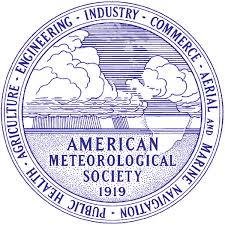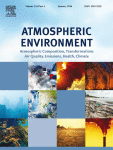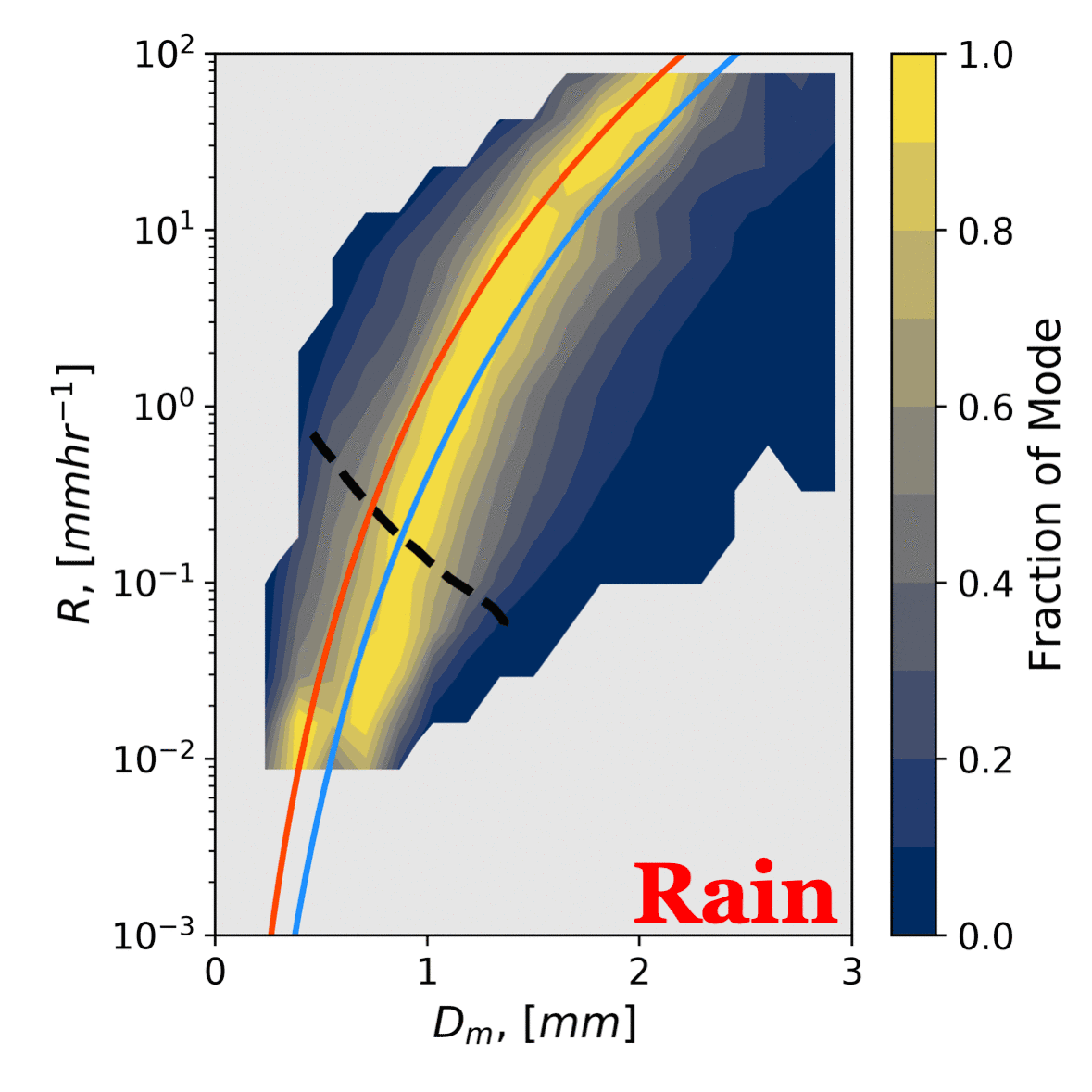
My name is Randy Chase and I am PhD candidate at the University of Illinois. Below you can read about my research, both current and past. For random weather musings, check out @dopplerchase
My current research is involved with the Cloud Systems Research Group (UIUC) and the Cloud Physics Group (OU). I am working with Steve Nesbitt and Greg McFarquhar on cloud/precipitation physics by using, testing, improving and creating remote sensing retrievals of precipitation. I focus mainly on ice-phase precipitation but have a broad interest in microphysics and radar meteorology.
PhD:
Current climate models and satellite climatologies disagree on the distribution of snowfall at the surface as well as throughout the atmospheric column. Thus, my work aims to improve estimates of both the mass (ice water content) and mass flux (snowfall rate) from the Global Precipitation Measurement (GPM) Dual-Frequency Precipitation Radar (DPR). Several recent studies comparing GPM-DPR to CloudSat (e.g., Skofronik-Jackson et al. 2019 ; Casella et al. 2017 ) show a large underestimation of snow from GPM-DPR. In general, my PhD dissertation aims to assess and improve GPM-DPR's snowfall retrievals.
Chapter 1:
The GPM-DPR algorithm assumes that precipitation particle size distributions abide by a empirical relation that is prescribed between rainfall rate (R) and the mass weighted mean diameter (Dm). This relation was ultimately derived from Kozu et al. (2009), and hasn't been directly evaluated. Furthermore, the empirical relation, which is derived from rainfall, is used throughout the atmospheric columns regardless of hydrometeor phase. Thus, my first chapter aims to evaluate the R-Dm relation and if it is appropriate in snowfall. Results will be found in the paper listed below.
Paper:
Chase, R. J., Nesbitt, S. W. and McFarquhar G. M. accepted : Evaluation of the microphysical assumptions within GPM-DPR using ground-based observations of rain and snow.
Chapter 2:
To improve the retrieval of snowfall from GPM-DPR, NASA Ground Validation (GV) data and a large database of snowfall scattering properties are used to construct a new, multifrequency retrieval. Specifically, machine learning methods (i.e., neural networks) are explored. Preliminary versions of this work were presented at AGU Fall Meeting 2019 and AMS Annual 2020 .
Paper:
Chase, R. J., Nesbitt, S. W. and McFarquhar G. M. in prep : Retrieving snow microphysical properties using in-situ data, neural networks and numerical scattering results. A GPM-DPR perspective.
Chapter 3:
Through the previous two chapters it should show that our new retrieval will offer improved retrieval results. Thus, the final chapter of my dissertation will apply the trained model in chapter 2, to 6+ years of GPM-DPR measurements. Questions like "What is the global distribution of near-surface Dm in snowfall?" and "Does near-surface Dm in snow have a diurnal cycle?". Stay tuned for more on this topic later.
Additional Collaborations
Ding, S., McFarquhar, G. W., Nesbitt, S., Chase, R. J. , Poellot, M. R., Wang, H. submitted to MDPI Atmosphere: The dependance of mass-dimensional relationships on median mass diameter. MDPI Atmosphere
MS:
Triple-frequency observations of cloud ice and snow. Using the Airborne Precipitation Radar (third generation), three radar frequencies (Ku, Ka and W band) are used in conjunction with in-situ measurements to investigate and evaluate cloud ice/snow retrievals of characteristic size, shape and effective density.Related papers:

Chase, R. J., Finlon, J. A., Borque, P., McFarquhar, G. M., Nesbitt, S. W., Tanelli, S., Sy, O. O., Durden, S. L. and Poellot, M. 2018: Evaluation of triple-frequency radar retrieval of snowfall properties using conincident airborne in-situ observations during OLYMPEX. Geophys. Res. Lett. 2018 paper link .
Leinonen, J., Lebsock, M. D., Tanelli, S., Sy, O. O., Dolan, B., Chase, R. J. , Finlon, J. A., von Lerber A. & Moisseev, D. 2018: Retrieval of snowflake microphysical properties from multi-frequency radar observations. Atmospheric Measurement Techniques. 2018 paper link
Tridon, F., Battaglia, A., Tanelli, Chase, R. J. , Turk, F. J., Leinonen, L., Kneifel, S., Mroz, Kamil, Finlon, J. A., Bansemer, A., Tanelli, S., Heymsfield, A. J., Nesbitt, S. W. 2018: The microphysics of stratiform precipitation during OLYMPEx: compatibility between 3-frequency radar and airborne in situ observations. JGR. paper link
Undergraduate Research
My undergraduate research was involved with the downward transport of ozone rich air within thunderstorms in the Amazon. For two summers I worked under Dr. Jose D. Fuentes at Penn State as part of the Climate Science REU . We used ground based observations of ozone and environmental conditions to detect when ozone enhancements occurred and document their magnitude. See the posters (AMS 2015, AMS 2016) and the manuscript ( Gerken et al. 2016 ) on the left of this page for more information.
Education:
Undergraduate:
B.S. Double Major in Meteorology, Water Resources minor in Mathematics; 2016
summa cum laude
State University of New York, The College at Brockport
Graduate:
MS Atmospheric Science; 2018
University of Illinois, Urbana-ChampaignAdvisers: Steve Nesbitt , Greg McFarquhar
PhD Atmospheric Science; December 2020 (ambitious) May 2021 (more realistic)
University of Illinois, Urbana-ChampaignAdvisers: Steve Nesbitt , Greg McFarquhar



